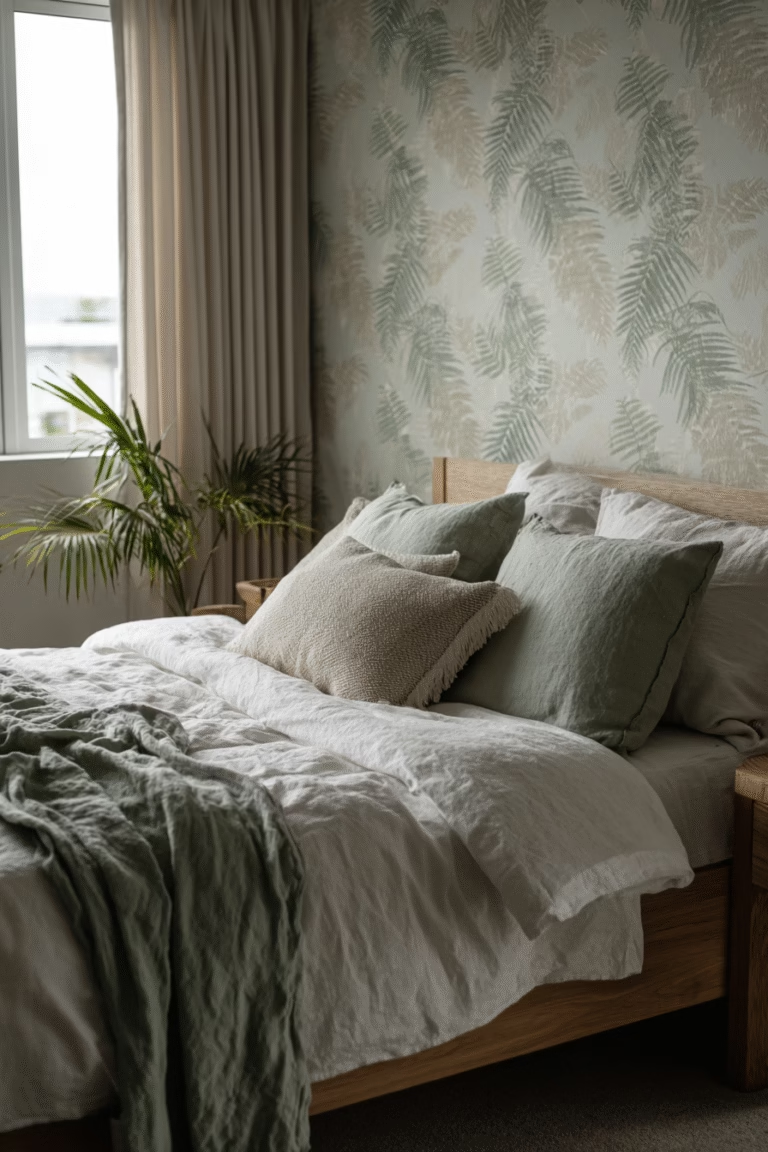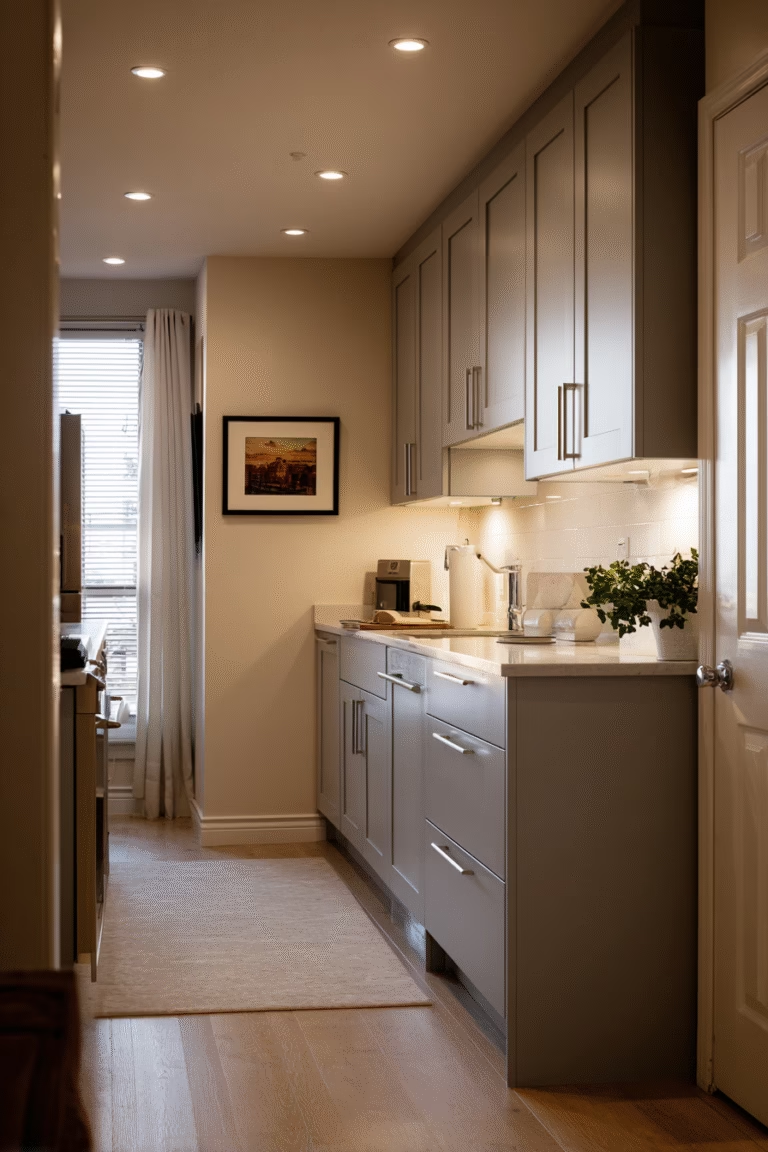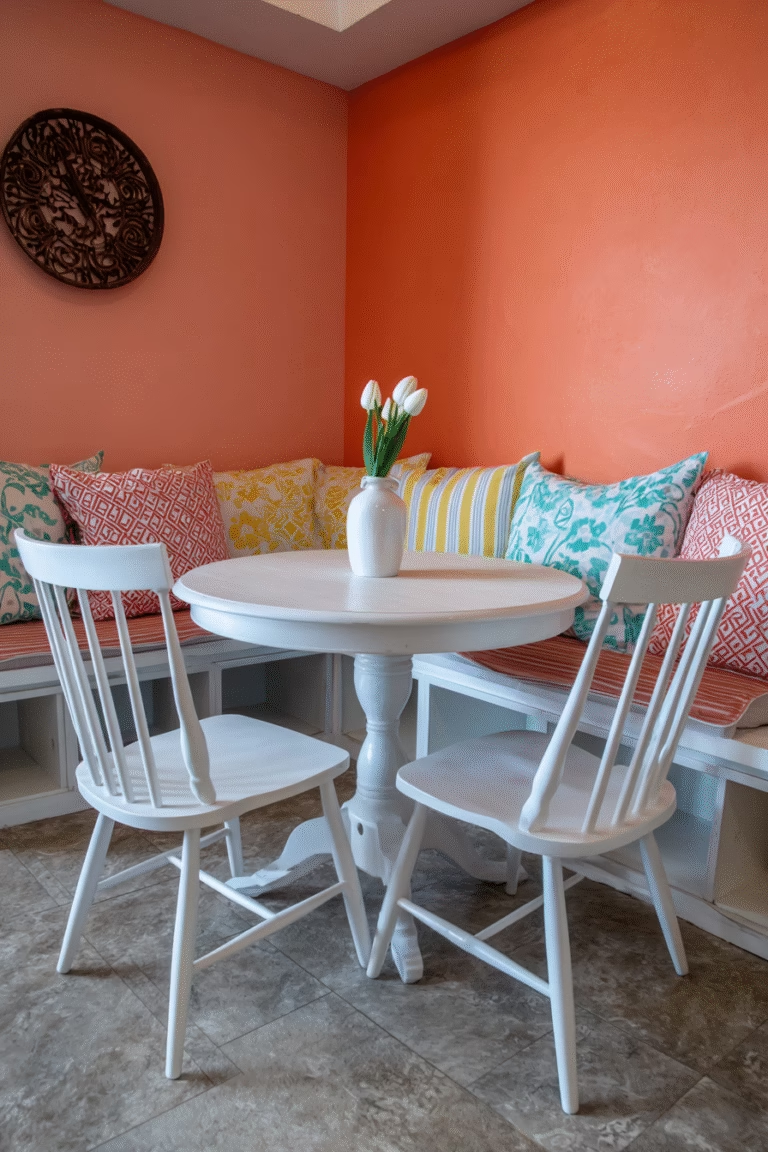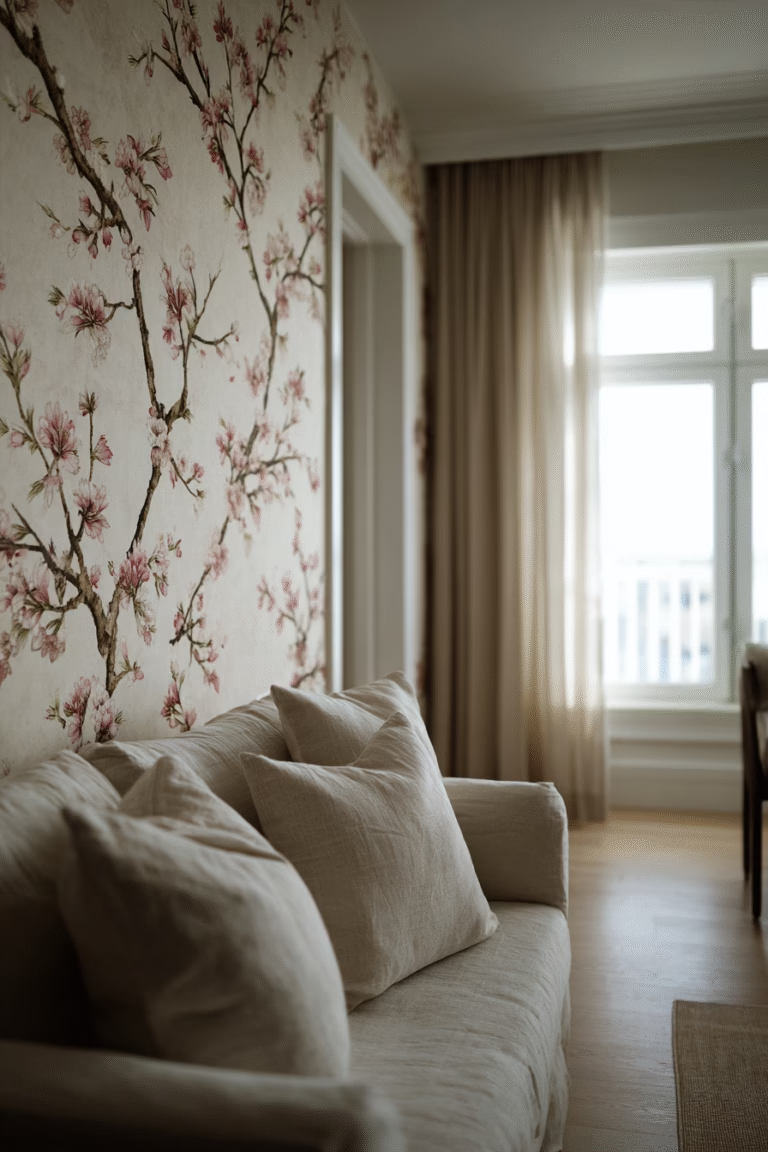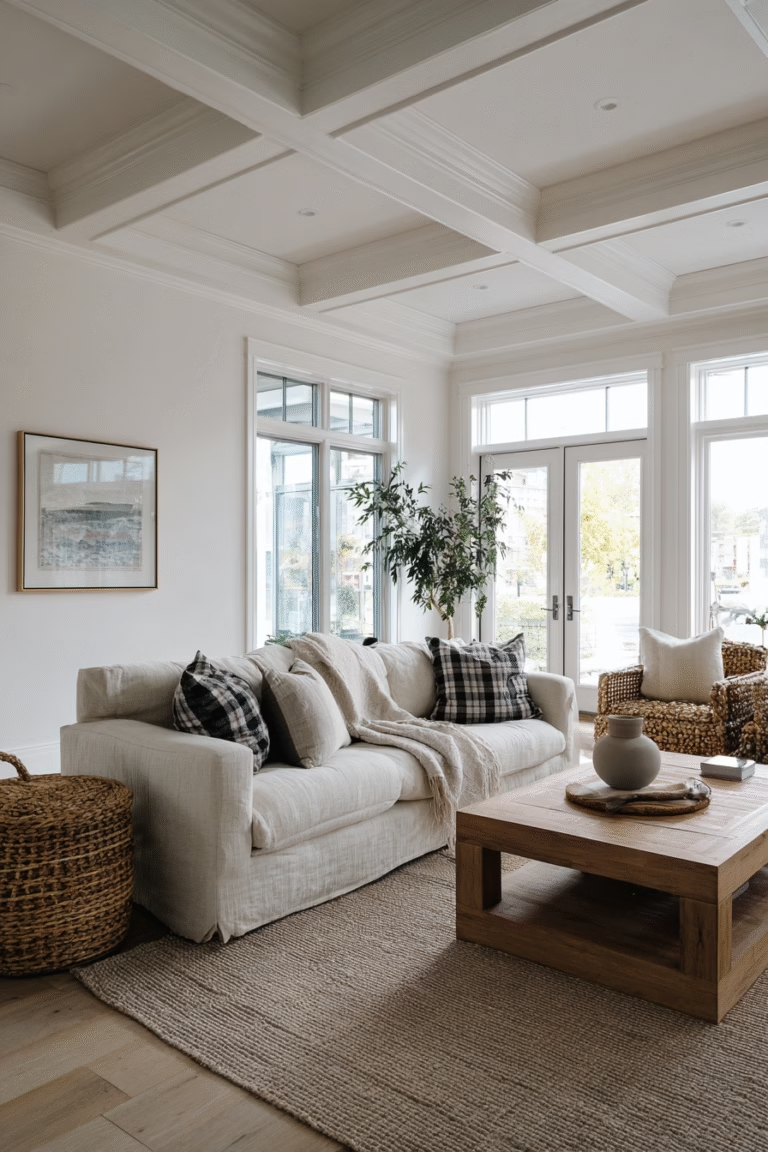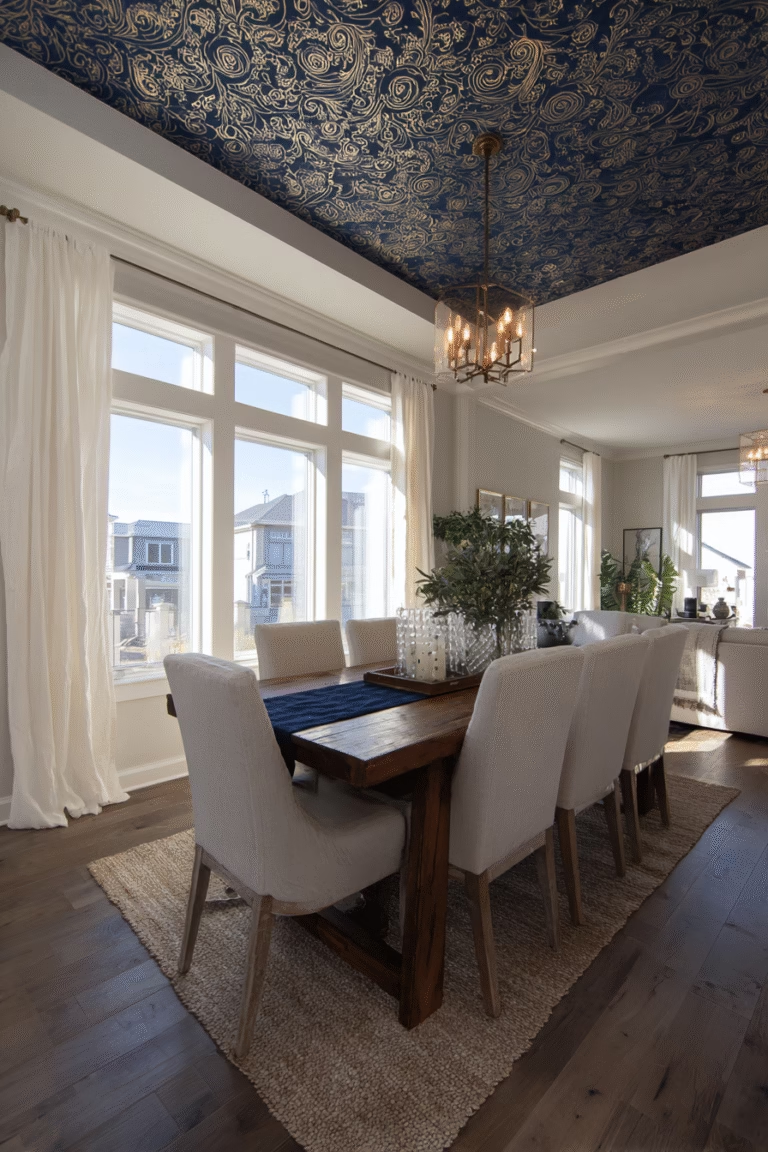EVP Flooring vs LVP Flooring Guide – What is Better?
This site contains affiliate links. As an Amazon Associate, I earn from qualifying purchases. The content on this website was created with the help of AI. Please read our Editorial Policy for more information.
Choosing between EVP and LVP flooring can feel overwhelming when you’re standing in a showroom staring at nearly identical-looking planks. Both luxury vinyl plank flooring options mimic the look of natural wood, both offer superior water resistance compared to real wood, and both cost significantly less than solid hardwood. So what’s the actual difference?
The main difference between EVP vs LVP flooring lies in the core layer composition. EVP (Engineered Vinyl Plank) features a rigid core made from stone plastic composite or wood plastic composite, while LVP (Luxury Vinyl Plank) has a flexible, pure vinyl core layer. This core difference affects everything from installation ease to durability to price per square foot.
In this guide, you’ll learn exactly what sets these two types of vinyl flooring apart, when each flooring material is the best choice, and how to make the smartest decision for your specific project. Whether you’re renovating a moisture-prone basement or updating your kitchen, you’ll know which vinyl plank flooring is right for you.
What Is EVP Flooring?
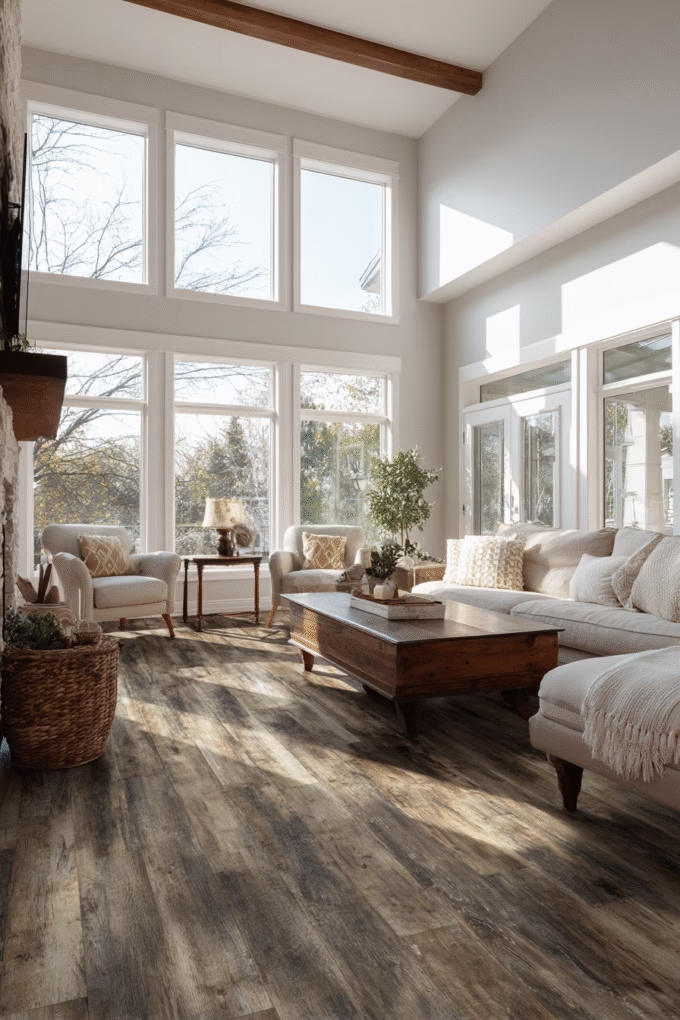
EVP stands for Engineered Vinyl Plank flooring—a popular choice for homeowners seeking durable, water-resistant flooring. EVP floors feature multiple layers with a rigid core layer at its heart, typically made from either stone plastic composite (SPC) or wood plastic composite (WPC).
The construction of EVP flooring includes:
Backing layer: Provides structural support and sound absorption. This foundational backing layer stabilizes the plank and often includes noise-reducing properties that make EVP flooring a great choice for multi-level homes.
Rigid core layer: Made from stone plastic composite or wood plastic composite. This engineered polymer core layer gives EVP its exceptional dimensional stability and resistance to temperature changes. The rigid core flooring creates a firm, solid feel underfoot that’s more substantial than traditional vinyl flooring.
Vinyl layer with photographic design: Contains high-resolution imaging that replicates natural wood grain patterns, natural stone textures, or tile designs. Modern printing technology makes these patterns remarkably realistic, rivaling the appearance of real wood.
Wear layer: A transparent protective coating measured in mils (one mil equals 0.001 inch). This clear wear layer shields the floor from scratches, stains, and fading. Quality EVP typically features a 12-20 mil wear layer for residential use, though commercial applications may use thicker wear layers up to 28 mil.
Engineered vinyl plank flooring typically measures 5.5mm to 8mm thick. The rigid core is what makes EVP exceptionally stable—it won’t expand or contract significantly with temperature fluctuations, and it can bridge minor subfloor imperfections without telegraphing bumps through to the surface.
Most EVP flooring uses a click-lock installation system, allowing planks to snap together without adhesive. This floating floor method makes EVP a great option for DIY installation.
What Is LVP Flooring?

LVP stands for Luxury Vinyl Plank flooring—a popular choice that’s been available longer than EVP. Unlike EVP’s rigid core, LVP flooring features a flexible vinyl core layer made from 100% vinyl material.
The layer structure of LVP flooring includes:
Backing layer: Provides the foundation and base stability for the plank. This backing layer is typically thinner than EVP’s backing layer.
Flexible vinyl core layer: Made entirely from vinyl, this core layer is more pliable than EVP’s rigid composite. While this creates a softer feel underfoot, it also makes LVP flooring more susceptible to denting from concentrated weight.
Photographic vinyl layer: Creates the realistic appearance of natural wood or natural stone, just like EVP flooring.
Wear layer: Protects the surface from daily wear. The wear layer on LVP flooring typically ranges from 6 mil to 20 mil depending on quality and intended use.
Luxury vinyl plank flooring in the LVP category is generally thinner than EVP, usually measuring 2mm to 5mm in total thickness. This thinner profile can be advantageous when you need to match existing floor heights or work with tight clearances under appliances.
Installation methods for LVP flooring vary. Traditional LVP often requires glue-down installation where adhesive bonds planks directly to the subfloor. However, newer luxury vinyl plank products increasingly feature click-lock systems similar to EVP. Some budget options come as peel-and-stick tiles.
Understanding Luxury Vinyl Tile (LVT)
Before diving deeper into EVP vs LVP, it’s worth noting that luxury vinyl tile (LVT) is another vinyl flooring option. While LVP and EVP come in plank shapes that mimic natural wood, luxury vinyl tile comes in tile shapes designed to replicate natural stone, ceramic, or marble.
LVT shares the same core construction principles as LVP—using either flexible vinyl cores or rigid cores—but the tile format makes it a great choice for spaces where you want a stone or tile aesthetic rather than wood-look flooring. The same considerations about core layer composition apply whether you’re choosing luxury vinyl plank or luxury vinyl tile.
The Key Differences Between EVP and LVP
Understanding the practical differences between EVP vs LVP flooring helps you choose the right vinyl flooring for your project.
Core Composition: The Primary Difference
The core layer is what truly separates these two types of flooring. EVP’s rigid core (stone plastic composite or wood plastic composite) creates exceptional dimensional stability. Temperature swings that might cause slight expansion in LVP flooring have minimal effect on EVP. This makes engineered vinyl plank flooring ideal for spaces with inconsistent climate control or radiant floor heating.
LVP’s flexible vinyl core layer offers a softer, more cushioned feel underfoot. However, this flexibility means luxury vinyl plank flooring conforms more closely to the subfloor beneath it, which can be problematic if your subfloor isn’t perfectly level.
Water Resistance: A Critical Factor
Both EVP and LVP flooring offer excellent water resistance, which makes them far superior to laminate flooring or natural wood in moisture-prone areas. However, there are subtle differences.
EVP’s rigid core provides superior water resistance because the stone plastic composite or wood plastic composite doesn’t absorb moisture. The planks also lock together more firmly, creating a more water-resistant seal between planks.
LVP flooring is also highly water resistant, especially when properly installed with sealed seams. The flexible vinyl core layer naturally repels water, though the planks may not lock quite as tightly as EVP’s rigid core flooring.
Both are dramatically more water resistant than laminate flooring, which can swell and warp when exposed to moisture, or natural wood, which can cup and crack with water exposure.
Thickness and Durability
EVP planks typically measure 5.5-8mm thick, with most quality products around 7-8mm. This thickness combined with the rigid core layer creates a more substantial, solid feel. The rigid core flooring also resists denting better than LVP’s flexible core.
LVP flooring is thinner at 2-5mm, making it less resistant to concentrated weight from heavy furniture or appliances. Without furniture pads, items like refrigerators or entertainment centers may leave permanent impressions in luxury vinyl plank flooring over time.
The wear layer thickness matters just as much as overall thickness. A thicker wear layer (20 mil vs 8 mil) provides better long-term durability regardless of whether you choose EVP or LVP flooring.
Installation Methods
Most EVP flooring uses click-lock floating installation. Planks snap together without adhesive and “float” over the subfloor with expansion gaps around the perimeter. This method is faster, cleaner, and makes engineered vinyl plank flooring a great option for DIY installers.
Traditional LVP flooring often requires glue-down installation, though click-lock luxury vinyl plank is becoming more common. Glue-down creates a permanent bond but requires more time, creates more mess, and makes future removal challenging. The adhesive also needs time to cure before you can walk on the floor.
Subfloor Requirements
EVP’s rigid core can bridge minor subfloor imperfections (variations up to 3/16″ over 10 feet) without expensive leveling work. The stiffness prevents small bumps or dips from showing through to the finished surface.
LVP’s flexible core layer means it telegraphs subfloor irregularities more readily. Even small imperfections can show through as visible depressions or raised areas in the finished floor. This often requires additional subfloor preparation like skim coating or self-leveling compound, adding $1-$3 per square foot to your project cost.
Cost Comparison Per Square Foot
According to HomeGuide, vinyl flooring installation costs $2-$10+ per square foot including materials and labor, with luxury vinyl plank and luxury vinyl tile typically running $4-$16 per square foot installed.
EVP flooring materials generally cost $3-$7 per square foot. Professional installation adds $1.50-$3 per square foot for click-lock systems. For a 200 square foot kitchen, expect total costs of $900-$2,000.
LVP flooring materials typically cost $2-$5 per square foot. Click-lock luxury vinyl plank installation runs $1.50-$3 per square foot, while glue-down installation costs $3-$6 per square foot due to additional labor. For that same 200 square foot kitchen, total costs would be $700-$1,600.
The lower upfront cost per square foot of LVP is appealing, but factor in potential subfloor preparation expenses. If your subfloor needs leveling, those savings disappear quickly.
EVP Flooring: Pros and Cons
Advantages
Superior water resistance: The rigid composite core layer doesn’t absorb moisture like wood-based products. EVP flooring performs exceptionally well in kitchens, basements, and laundry rooms where spills and humidity are common. This water resistance makes it a great choice over laminate flooring or natural wood in these spaces.
Temperature stability: EVP won’t expand or contract significantly with seasonal temperature changes. This makes engineered vinyl plank flooring compatible with radiant floor heating and suitable for rooms that experience temperature fluctuations.
Hides subfloor imperfections: The rigid core layer bridges minor dips and bumps, potentially saving you hundreds on subfloor preparation. This makes EVP flooring a popular choice for renovations.
Easy DIY installation: Click-lock systems allow confident DIYers to install flooring themselves, saving $300-$1,200 on a typical room. This makes EVP a great option for budget-conscious homeowners who can handle installation.
Better sound dampening: Most EVP includes sound-absorbing properties in the backing layer that reduce noise transmission between floors—valuable in multi-story homes.
Long lifespan: Quality EVP flooring with a 20 mil wear layer can last 20-25 years with proper care, according to flooring manufacturers. This longevity makes it a great choice for long-term value.
Disadvantages
Higher price per square foot: EVP costs 20-40% more than comparable LVP flooring products. This adds up quickly in larger spaces.
Difficult single-plank replacement: Because planks interlock, replacing one damaged piece requires disassembling from the nearest wall to the damaged area.
Can dent under extreme weight: Very heavy objects (grand pianos, large aquariums) may create permanent impressions despite the rigid core layer. Use wide furniture pads under concentrated loads.
Environmental impact: Like all vinyl flooring products, EVP uses plastics and isn’t biodegradable. The environmental impact of manufacturing vinyl flooring is worth considering if sustainability matters to you.
LVP Flooring: Pros and Cons
Advantages
Lower cost per square foot: LVP typically costs 20-30% less than EVP flooring, making it budget-friendly for larger projects or rental properties. This lower price per square foot makes luxury vinyl plank a popular choice for cost-conscious renovations.
Softer underfoot: The flexible vinyl core layer provides a slightly cushioned feel that’s more comfortable for standing or walking barefoot. This makes LVP flooring a great option for bedrooms.
Thinner profile: At 2-5mm thick, luxury vinyl plank flooring works better when you need to match existing floor heights or accommodate tight clearances under appliances.
Water resistant when properly installed: Quality LVP with sealed seams offers excellent water resistance for most residential applications, far exceeding laminate flooring or natural wood.
Disadvantages
Less durable core layer: The flexible vinyl core dents more easily under heavy furniture or appliances compared to EVP’s rigid core flooring.
Requires flat subfloors: Any subfloor irregularities will show through, often necessitating expensive prep work that eliminates initial cost savings per square foot.
Less temperature stable: LVP can expand or contract slightly with temperature changes, though this is rarely problematic in climate-controlled homes.
Glue-down installation challenges: Traditional glue-down luxury vinyl plank is messier, takes longer, and makes future changes difficult compared to click-lock vinyl flooring.
Where to Use EVP Flooring

EVP flooring excels in specific applications where its strengths matter most:
Kitchens: Spills, dropped dishes, and temperature fluctuations from cooking make kitchens ideal for EVP’s water resistance and durability. The rigid core flooring holds up better than laminate flooring or natural wood in these conditions.
Basements: Below-grade spaces with potential moisture from concrete slabs benefit from EVP’s waterproof core layer and temperature stability. This makes engineered vinyl plank flooring a great choice over laminate flooring, which can swell from moisture.
Bathrooms: While tile remains best for full bathrooms, EVP flooring works well in powder rooms or when you want visual continuity with adjacent bedrooms. The water resistance makes it a popular choice over natural wood. Ensure proper sealing around fixtures.
High-traffic areas: Entryways, hallways, and family rooms with heavy foot traffic benefit from EVP’s durable wear layer and rigid core that resists denting. The thick wear layer makes EVP a great option for these spaces.
Multi-level homes: If noise transmission between floors is a concern, the backing layer in EVP flooring provides sound-dampening properties that help reduce footstep noise.
Over imperfect subfloors: When leveling would be prohibitively expensive, EVP’s rigid core layer can bridge minor irregularities, making it a great choice for older homes.
Where to Use LVP Flooring
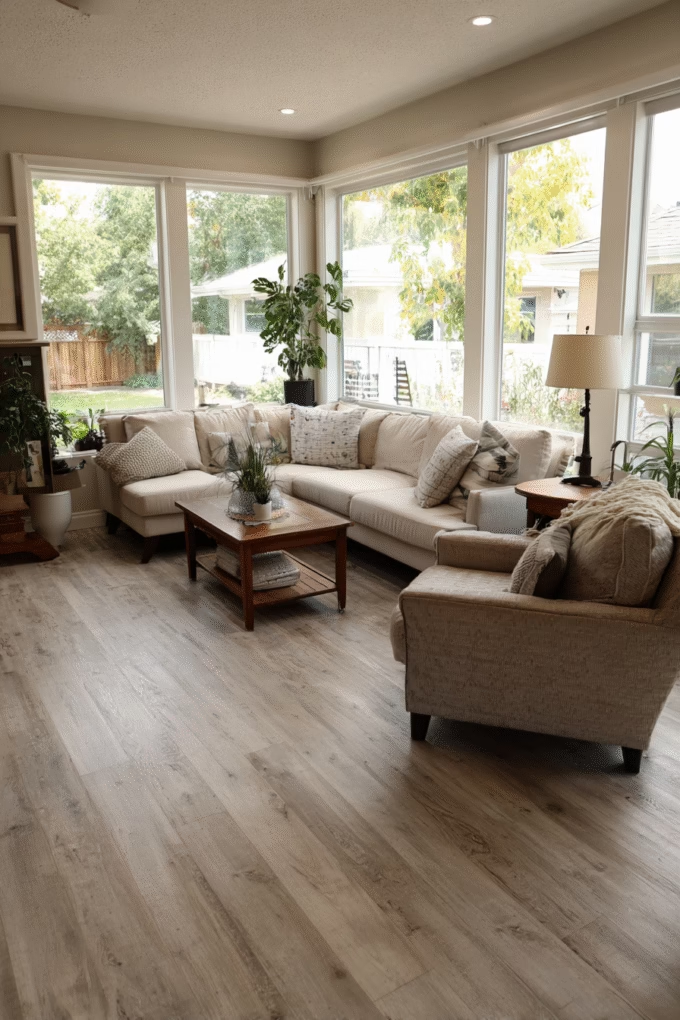
LVP flooring makes sense in different circumstances:
Bedrooms: The softer feel is more comfortable for bare feet, and bedrooms see less moisture and traffic than other spaces. This makes luxury vinyl plank a popular choice for sleeping areas.
Budget projects: When cost is the primary constraint and you’re updating multiple rooms, LVP’s lower price per square foot helps maximize coverage compared to EVP or laminate flooring.
Rental properties: Landlords often choose LVP for units where budget matters more than premium feel, and easier replacement fits rental turnover. The lower cost per square foot makes it a great option for investment properties.
Over level subfloors: If you have a perfectly flat subfloor, LVP’s flexibility isn’t a disadvantage. Glue-down luxury vinyl plank creates a stable, permanent floor.
When height matters: Tight clearances under appliances or maintaining consistent floor height with adjacent rooms may require LVP’s thinner 2-5mm profile compared to thicker EVP flooring.
How EVP and LVP Compare to Other Flooring Materials
Understanding how these vinyl flooring options stack up against other popular flooring materials helps you make informed decisions.
EVP/LVP vs Laminate Flooring
Laminate flooring might seem similar to vinyl plank at first glance—both use photographic layers to mimic natural wood. However, laminate has a fiberboard core made from compressed wood particles, making it vulnerable to water damage in ways that vinyl flooring simply isn’t.
The water resistance of both EVP and LVP flooring far exceeds laminate flooring. A significant spill left standing can cause irreversible swelling in laminate. Both luxury vinyl plank options are waterproof or highly water resistant, making them the better choice for kitchens, basements, and other moisture-prone areas.
Cost-wise, laminate flooring runs $2-$7 per square foot installed—similar to LVP and slightly less than EVP. But the lack of water resistance makes vinyl flooring the smarter long-term investment for most homes.
EVP/LVP vs Natural Wood
Natural wood (solid hardwood) costs $8-$15+ per square foot installed—double to triple the cost of EVP or LVP flooring. While natural wood offers unmatched authenticity and can be refinished multiple times, it requires more maintenance and lacks the water resistance that makes vinyl flooring a great choice for real-world living.
The wear layer on quality vinyl flooring protects against scratches and stains that would damage natural wood. And while natural wood adds more resale value, the practical benefits of water resistance often outweigh prestige for busy families.
EVP/LVP vs Sheet Vinyl
Sheet vinyl is the older, budget-friendly vinyl flooring option that comes in large rolls. While sheet vinyl offers water resistance, it lacks the realistic appearance of luxury vinyl plank and luxury vinyl tile. The photographic layer in modern vinyl plank flooring creates far more convincing wood and stone looks.
Sheet vinyl typically costs $1-$3 per square foot installed—cheaper than LVP or EVP—but it looks cheaper too. For a modest increase in cost per square foot, luxury vinyl plank flooring delivers dramatically better aesthetics.
How to Decide: EVP vs LVP
Use this decision framework to choose the right vinyl flooring for your project:
Choose EVP flooring if:
- You’re installing in moisture-prone areas (kitchens, basements, bathrooms)
- Your subfloor has minor imperfections and you want to avoid leveling costs
- You want DIY-friendly click-lock installation
- Temperature stability matters (radiant heating, inconsistent climate control)
- You prefer a more substantial, solid feel from rigid core flooring
- You can accommodate the thicker 5.5-8mm profile
- Budget allows for the higher cost per square foot ($3-7)
- You want maximum water resistance and durability
Choose LVP flooring if:
- Budget is your primary constraint
- You prefer softer, more cushioned flooring underfoot from the flexible core layer
- You need the thinnest possible profile (2-5mm) for height restrictions
- Your subfloor is perfectly level or you’re willing to invest in leveling
- You’re updating a rental property where cost per square foot matters more than premium feel
- You’re installing in low-moisture areas like bedrooms
Frequently Asked Questions
How long do EVP and LVP floors last?
Quality EVP flooring with a 20 mil wear layer typically lasts 20-25 years. LVP flooring generally lasts 15-20 years. Actual lifespan depends on wear layer thickness, foot traffic, and maintenance. Most vinyl flooring lasts 10-20 years on average, with premium products potentially reaching 25 years or more. This makes both types of vinyl flooring a great choice for long-term value.
Can you install EVP or LVP over existing flooring?
Yes, both types of vinyl flooring can install over existing tile, vinyl, or some laminates if the surface is flat, stable, and properly adhered. The existing floor must not have moisture issues or excessive wear. EVP’s rigid core layer makes it more forgiving over slightly uneven surfaces. Always check manufacturer specifications.
Do you need underlayment?
Most EVP flooring includes attached underlayment in the backing layer (often cork), so additional padding isn’t needed. Some luxury vinyl plank products include attached underlayment while others don’t. Check product specifications—adding underlayment when it’s already attached can void warranties and create too much cushion.
Which is better for resale value?
Neither EVP nor LVP flooring significantly increases home resale value like natural wood. However, both prevent negative impact from outdated or damaged flooring material. Buyers appreciate practical water resistance in kitchens and baths, making vinyl flooring a popular choice over natural wood in those spaces.
Can you put heavy furniture on vinyl plank flooring?
Yes, but use wide furniture pads under legs to distribute weight. EVP’s rigid core layer handles concentrated weight better than LVP’s flexible core. Extremely heavy items (grand pianos, large aquariums over 100 gallons) may create permanent indentations in either type of flooring. Furniture pads are essential to protect the wear layer and core.
How do you clean EVP and LVP?
Both types of vinyl flooring clean easily with regular sweeping and damp mopping using pH-neutral cleaners designed for vinyl. Avoid harsh chemicals, abrasive scrubbers, and steam mops that can damage the wear layer. Clean spills promptly to prevent them from seeping into seams. The water resistance of both flooring materials makes cleanup easier than with natural wood or laminate flooring.
Final Thoughts
For most homeowners renovating kitchens, basements, or high-traffic areas, EVP flooring offers better long-term value despite higher upfront costs per square foot. It is one the best engineered hardwood alternatives on the market and exceptionally remarkable flooring. The rigid core layer, superior water resistance, easier installation, and better performance over imperfect subfloors justify the additional expense. The thick wear layer ensures this flooring material will last for decades.
LVP flooring makes more sense when budget is the primary constraint, you need the thinnest possible profile, or you’re working with perfectly level subfloors. It’s also the practical choice for rental properties where cost-effective durability matters more than premium feel. The flexible core layer provides comfort in bedrooms and other low-traffic areas.
Both engineered vinyl plank and luxury vinyl plank flooring are excellent alternatives to laminate flooring, natural wood, and sheet vinyl. The water resistance, durability, and realistic appearance of these vinyl flooring options make them a popular choice for modern homes.
Whichever type of flooring you choose, prioritize quality over price. A budget EVP with a thin 8 mil wear layer won’t outperform a premium LVP with 20 mil protection. Look for reputable brands, adequate wear layer thickness (minimum 12 mil for residential), and clear warranty coverage.
And remember: proper installation matters as much as the flooring material quality. Whether you DIY or hire a professional, correct subfloor preparation and installation technique determine how well your vinyl flooring performs long-term.
